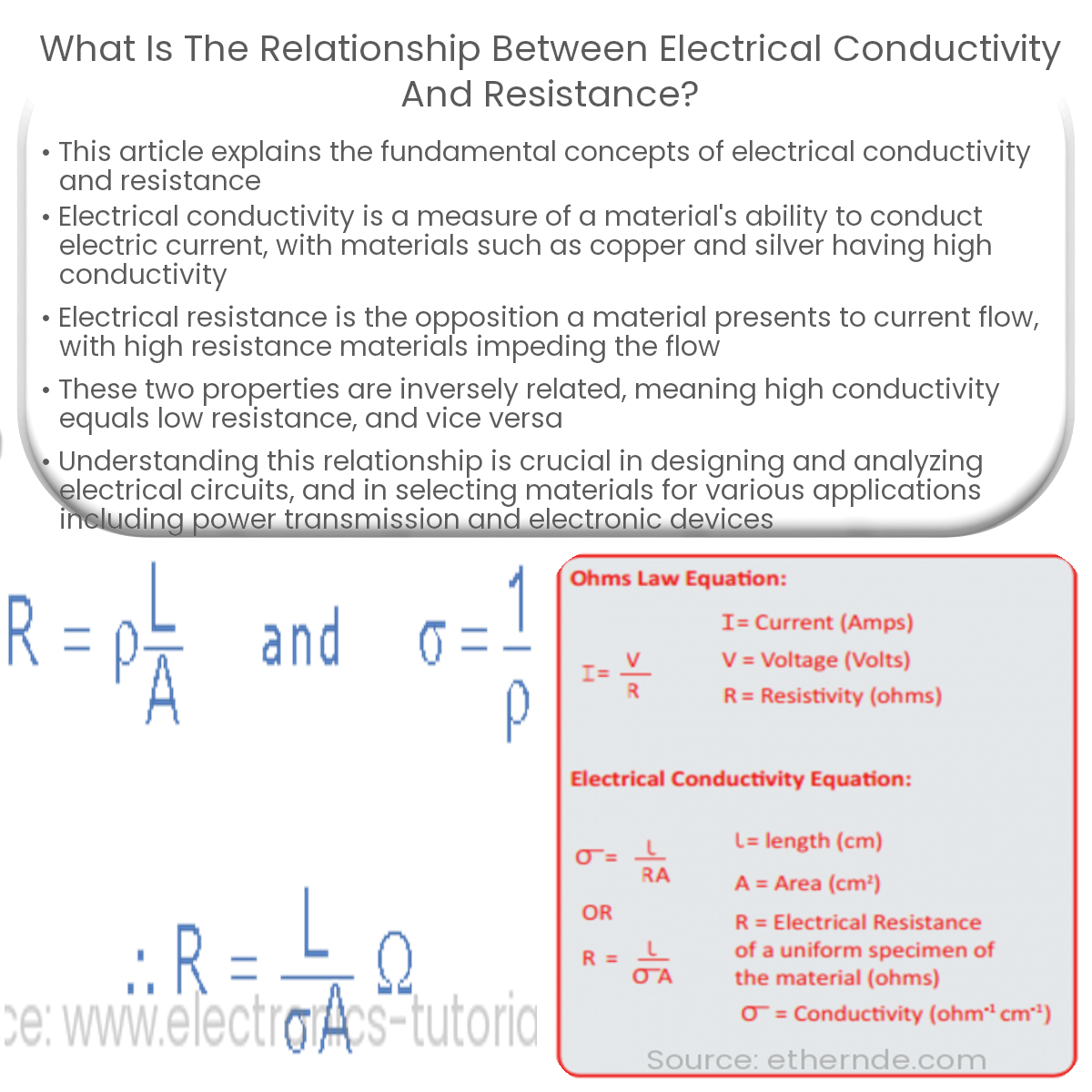Electrical conductivity and resistance are inversely related: high conductivity means low resistance and vice versa. They help in material selection for circuits.
Electrical Conductivity and Resistance: Understanding the Relationship
Electrical conductivity and resistance are two fundamental concepts in the field of electricity and electronics. Though they may seem opposite, they are closely related, and understanding their relationship is essential for grasping the behavior of electrical circuits.
What is Electrical Conductivity?
Electrical conductivity is a measure of a material’s ability to conduct electric current. It is the ease with which free electrons can move through a substance, allowing the flow of electrical current. Materials with high electrical conductivity, such as copper and silver, are considered good conductors, while materials with low conductivity, like rubber or plastic, are poor conductors or insulators.
What is Electrical Resistance?
Electrical resistance, on the other hand, is the opposition that a material offers to the flow of electric current. A high resistance material will impede the flow of current, leading to a voltage drop across the material, while a low resistance material will allow current to flow more freely. The unit of resistance is the ohm (Ω).
The Relationship Between Conductivity and Resistance
Electrical conductivity and resistance are inversely related. Mathematically, this relationship is expressed as:
R = 1 / σ
where R is the resistance, and σ (sigma) is the electrical conductivity. When the conductivity of a material is high, its resistance is low, and vice versa. Another way to understand this relationship is through the concept of resistivity (ρ), which is the intrinsic property of a material that opposes the flow of electric current. Resistivity is the inverse of conductivity:
ρ = 1 / σ
Resistance is directly proportional to resistivity and can be calculated using the following formula:
R = ρ • (L / A)
where L is the length of the material, and A is its cross-sectional area.
Applications and Importance
Understanding the relationship between conductivity and resistance is crucial for designing and analyzing electrical circuits. It helps engineers and technicians select suitable materials for conductors, insulators, and resistive components in various applications, such as power transmission lines, electronic devices, and electrical safety equipment.
Furthermore, the temperature-dependence of conductivity and resistance is an essential factor in many applications, as it affects the performance and efficiency of electrical systems. For example, increased resistance due to higher temperatures in power transmission lines can lead to energy loss and reduced efficiency.


